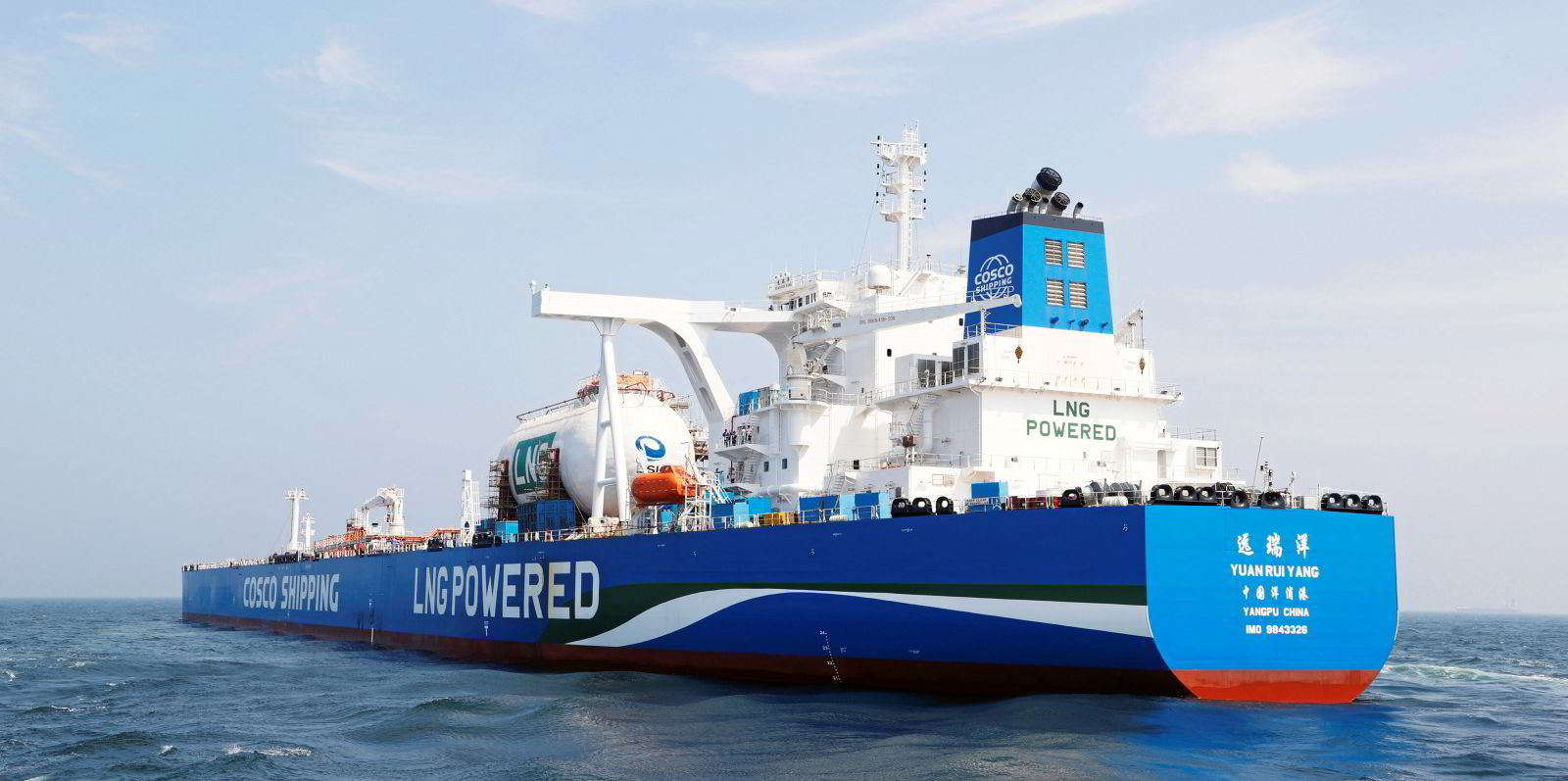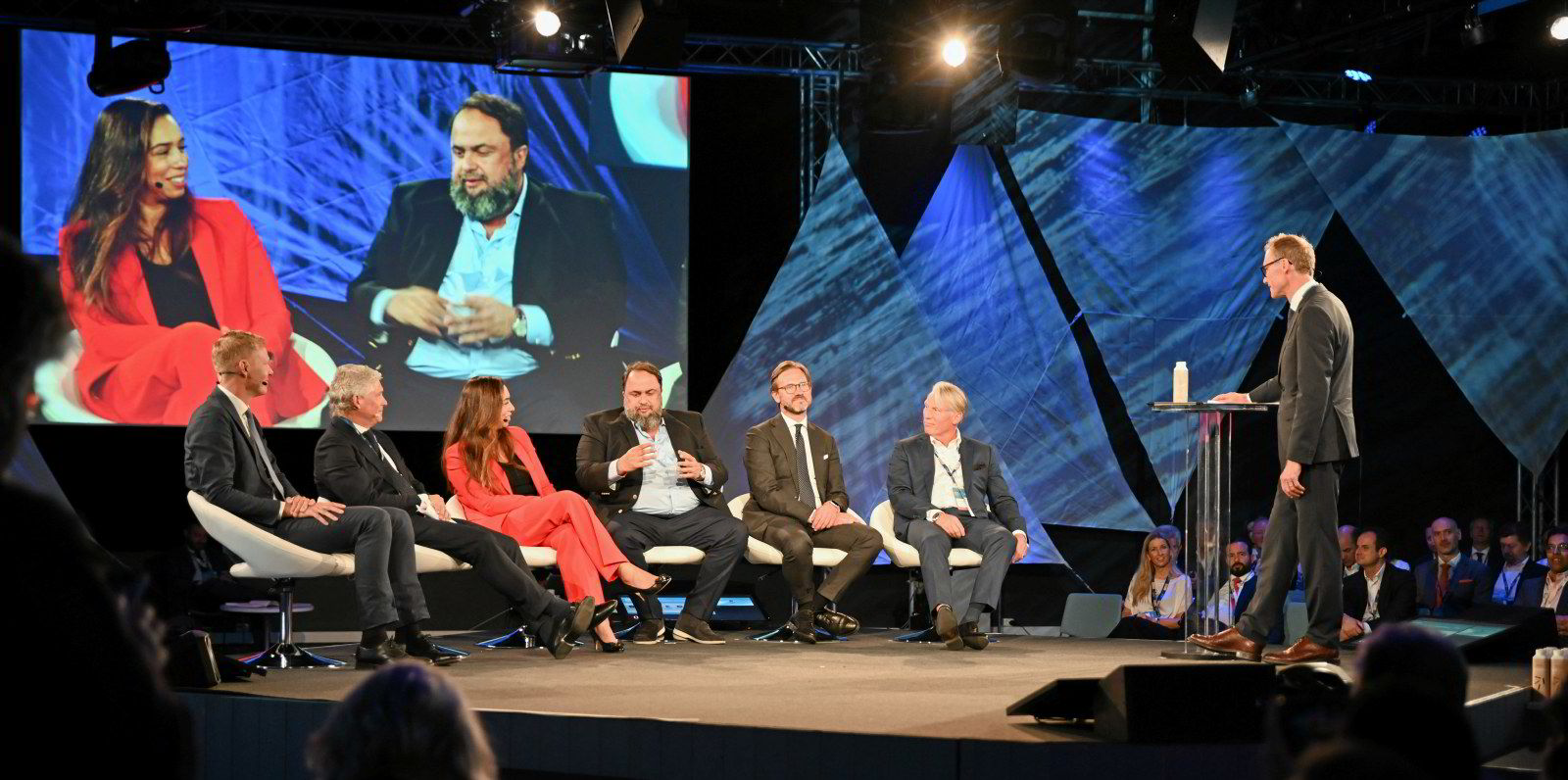Two dominant Greek shipping names are in talks with shipyards in China for VLCC newbuildings.
Shipbuilding sources said George Procopiou’s Dynacom Tankers Management and Evangelos Marinakis’ Capital Maritime & Trading are in discussions with Chinese shipyards for up to four VLCC newbuildings each.
Dynacom is said to be discussing an order for four conventional-fuelled 320,000-dwt crude carriers with privately owned New Times Shipbuilding, to be delivered between late 2026 and 2027.
Capital Maritime, meanwhile, is said to have approached Dalian Shipbuilding Industry Co (DSIC) for the same number of tankers but it is looking for dual-fuel propulsion — with engines powered by LNG or conventional fuels.
Several brokers in Greece and the US have reported that Dynacom’s VLCC newbuilding deal has been concluded. Dynacom managers, however, vehemently denied that information, calling it “completely false”.
Shipping sources told TradeWinds that Dynacom had, however, finalised a different, hitherto unreported, deal with New Times last week — for two aframax newbuildings due for delivery in 2026.
Dynacom is an old client of the yard, having ordered panamaxes and suezmaxes as well as VLCCs there.
In fact, Dynacom is the only company to have contracted New Times to build VLCCs.
It commissioned two 320,000-dwt crude carriers with the yard in 2010 that cost less than $100m. The duo — the Boston (built 2012) and Dalian (built 2013) are still in Dynacom’s fleet.
Under-funded
Dynacom and Capital Maritime’s interest in ordering new VLCCs is in line with that of market players that believe tankers have been under-invested.
At TradeWinds Shipowners Forum during Nor-Shipping, Sveinung Stohle, deputy chief executive of the Angelicoussis Group, said the situation had made the sector very attractive.
Investment in new tankers is running at a 40-year low, with effectively zero growth in the VLCC fleet in the next two years.
Shipowners have been hesitant to commit to newbuildings amid market volatility, uncertainty over future fuels and the risk of building stranded assets if international emissions rules change.
And with shipyards full with orders mainly for container ships and LNG carriers for the next 3.5 years, there is little room for a surge in tanker newbuildings for at least four to five years.
Chinese shipyards are offering competitive prices. Shipbuilding brokers said Dynacom is paying around $115m each for the VLCCs at New Times and is scheduled to take delivery between late 2026 and 2027.
As for Capital Maritime’s LNG dual-fuel VLCC newbuildings at DSIC, the company is expected to be paying between $125m and $130m per ship.
Brokers said interest in large tankers at Chinese yards had increased.
“Enquiries [for VLCCs] are coming into China because of their competitive prices,” said a broker.
“South Korean shipyards are quoting around $125m for a conventional marine-fuelled VLCC and if it is dual-fuelled it is an additional $25m.”
TradeWinds is told that South Korean shipbuilders have more appetite for LNG carriers and large boxships as they are pricier compared to large oil tankers.
Chinese yards’ reputation for constructing large tankers is also on the rise. Brokers said they are catching up with the South Korean shipbuilders.
“DSIC has constructed over 90 VLCCs and it delivered one LNG dual-fuel ship — the 318,000-dwt Yuan Rui Yang to Cosco Shipping Energy last year,” said the broker.






